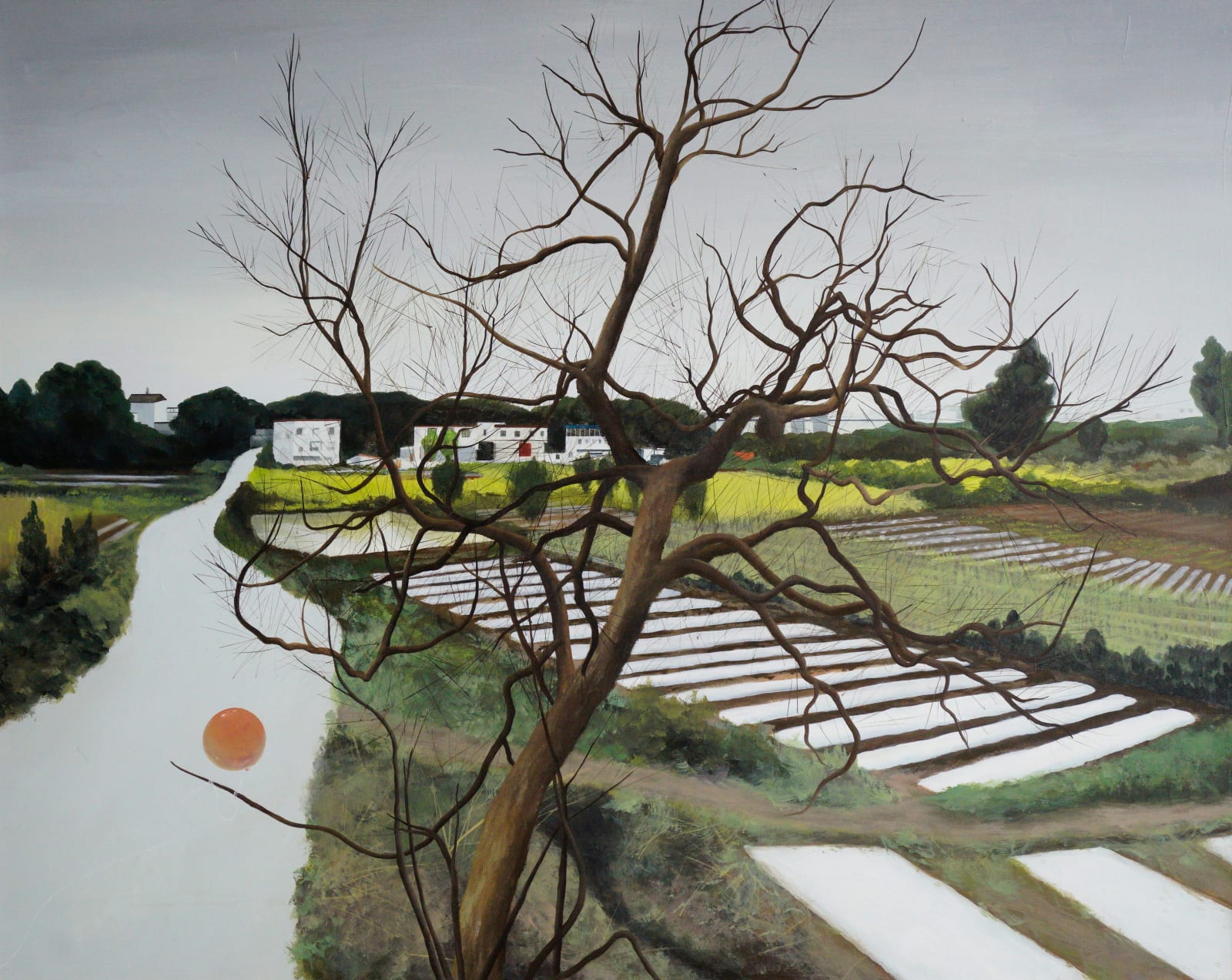SONG Wanjin: Iconic and Poetic: Curated by TAN Wei
BONIAN SPACE is pleased to announce the solo exhibition, Iconic and Poetic, by artist Song Wanjin, from August 24 to September 22, 2024. Song Wanjin focuses on observing the changes in the environment, capturing fragmented and subtle landscapes around her, and poetically reinterpreting them in her own way. Through processing and transforming everyday images, her paintings ultimately reveal a romantic beauty that feels both dreamlike and ambiguously situated on the edge of reality. Curated by Tan Wei, the exhibition features more than twenty recent acrylic on canvas paintings by Song Wanjin.
Song Wanjin: Iconic and Poetic
Text by Tan Wei
Iconic and Poetic, explores the forms, meanings, and relationships of images in visual art and culture, particularly focusing on the aesthetic qualities of images and their intertextuality with cultural and historical contexts. In Song's practice, the relationship between the individual and society, as well as between reality and appearance, is deeply explored. Her paintings often depict familiar yet absurd everyday scenes, which possess a comforting familiarity in form but reveal a sense of uncertainty through subtle variations in visual language. This uncertainty creates a delicate sense of alienation and reflection when viewers confront the abstracted or turned-away figures. This dialectical relationship between absence and presence constructs a complex self-awareness, prompting viewers to examine their own identity and societal roles.
In her works, elements of reality and surrealism intertwine, forming a unique visual narrative. Song transforms them into profound psychological and cultural symbols by reinterpreting everyday objects. Surrealism, by transcending reality, seeks the truth within and the power of the subconscious. In her works, symbols such as balloons and kites serve as superficial objects and carry metaphors that transcend reality, creating a dreamlike space. These symbols seem like keys to unlocking the subconscious, leading to an emotional realm free from the constraints of reality. In this realm, the harmonious integration of color, shape, and composition imbues the images with a poetic interpretive space, with each piece resembling a visual poem that offers viewers a profound aesthetic experience.
Resonance Between Color and Emotion
Color plays a crucial role in her works, creating visual beauty while revealing the complexity and depth of emotions. The choice of color evokes emotional responses in the viewer; for example, red is often associated with passion and energy, while blue is linked to calmness and serenity. Through the subtle use of color, Song displays delicate shifts in emotional states, expressing her understanding of the human condition. Each brushstroke of color reflects her keen sensitivity to and nuanced expression of emotions.
Expression of Identity Transformation
Song Wanjin's paintings reflect her emotional experiences at different stages of life. Through symbolic elements like balloons and grid lines, she reveals her understanding of the human condition. This emotional experience can be closely related to the theory of "liquid modernity." In modern society, identity, relationships, and social structures are constantly in flux. Through these "fluid" symbolic elements, Song's works capture the dynamic process of modern emotional experiences and psychological states. The fluidity of modernity is not only reflected in the changes within social structures but also deeply influences individual inner emotions and identity. Through her art, she materializes this fluidity, allowing viewers to feel the complex psychological experiences of modern society.
Her works also reflect the transformation of her identity as a woman and mother. Gender is constructed through repeated social practices and performances. After becoming a mother, she introduced symbolic elements such as infant bodies, pomelo trees, and apple trees into her works, which redefine her understanding of motherhood and female identity. Song Wanjin portrays the tension between traditional maternal roles and modern female independence, expressing through her art the challenges brought by identity transformation.
Intertextuality Between Image and Painting
In the intertextuality between images and paintings, Song Wanjin's works display the complex relationship between the two. In Camera Lucida, Barthes discusses the "punctum" of photography, a visual element that breaks the viewer's calm state and evokes deep emotional responses. In Song's works, the interplay of images and paintings disrupts traditional visual frameworks through these "punctums," creating new narrative methods. Her works are not only influenced by images but also construct a unique visual narrative by reinterpreting them. This intertextuality reflects her profound understanding of both images and paintings, showcasing how she combines the two to deeply explore the multiple layers of society, culture, and human emotions.
Experiences of Emotion and Life
In Song Wanjin's practice, "experiences of emotion and life" is a central theme. Through her paintings, she establishes an emotional connection with the viewer, guiding them to reflect on their relationship with the world around them and the emotional and life experiences within this relationship.
Iconic and Poetic emphasizes the multiple interpretive possibilities of images as symbols within different cultural contexts. Within this theoretical framework, images are not only seen as visual representations but also as carriers of meaning connected to complex contexts. Song Wanjin's paintings provoke deep reflection on cultural and psychological levels. Through the symbols and imagery in her works, she explores how images, through interaction with history and culture, become a bridge between individual and collective memory.


























